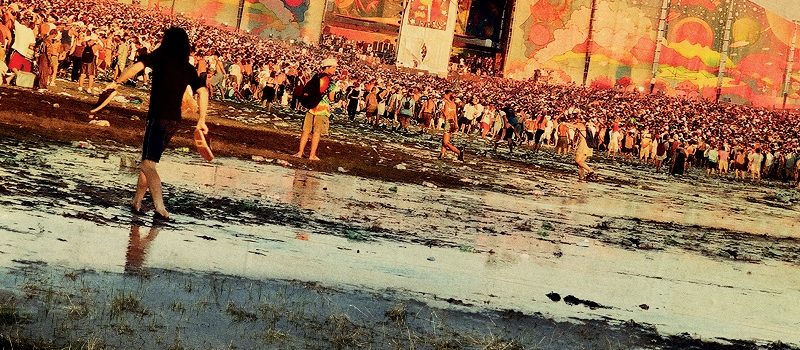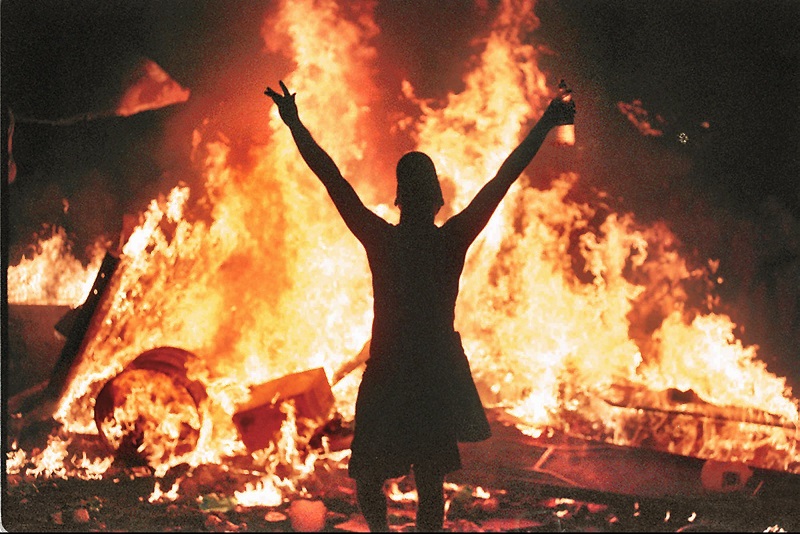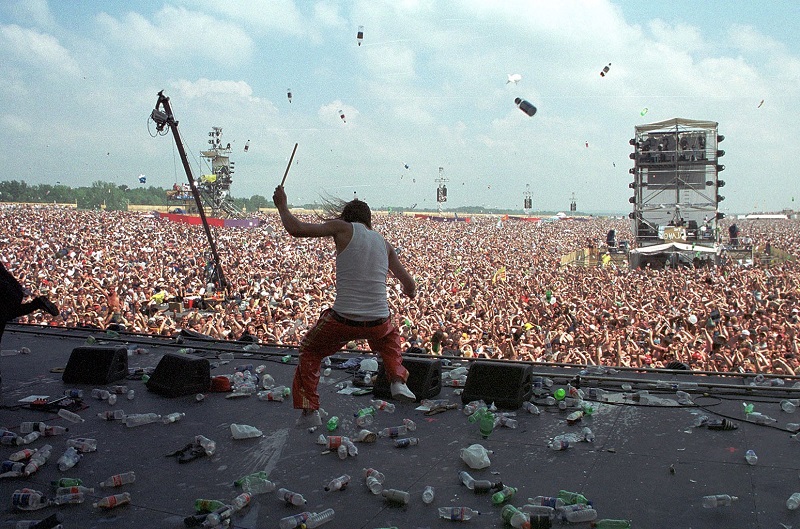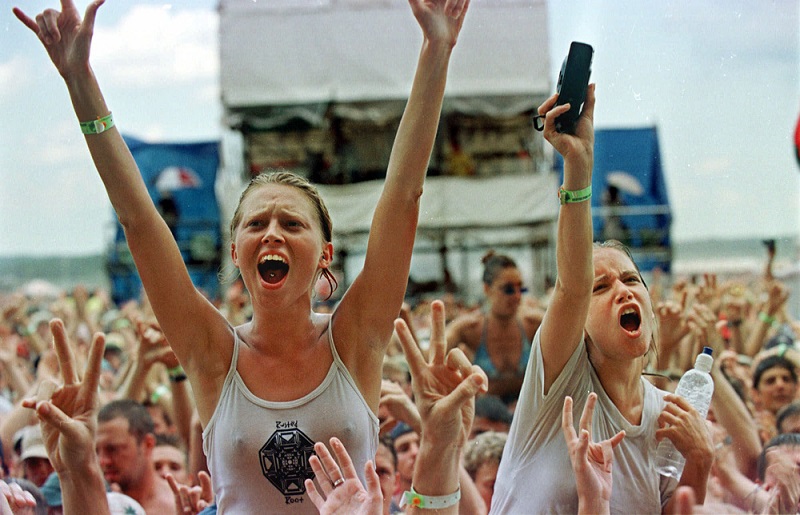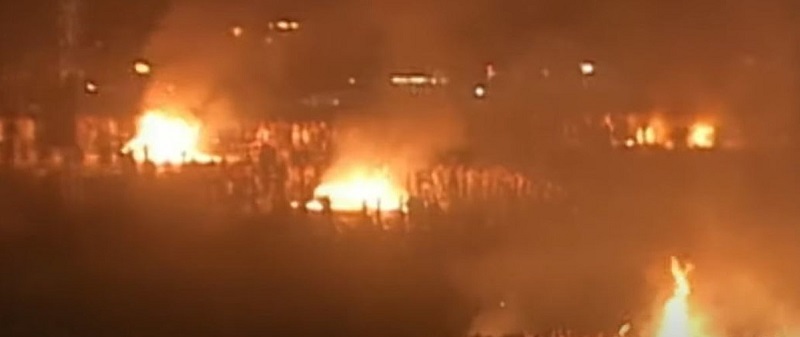Back in August of 1969, hundreds of thousands of sixties youth famously gathered in Woodstock, New York for Three Days of Peace, Love and Art. Then, the same producer who put on that iconic pop culture moment—Michael Lang, hooked up with concert promoter John Scher, and both thought it would be nice to mark the 25th anniversary of the Woodstock, and it could not have gone better.
Then, it seemed like a no-brainer to hold a similar concert in August of 1999 to celebrate the big 3-0 of Woodstock. The operative word in that last sentence is “seemed.” First, they moved the locale from a “green” landscape with real grass under people’s feet to an abandoned Air Force base, Griffiss Air Force Base, in Rome, New York.
For the three days of the concert series, the temperature hit the high 90s. Meanwhile, hundreds of thousands of people were giving off and absorbing the heat of that sea of humanity. Then, the kicker is that the festival sat on miles upon miles of granite hard-top, which has a habit of sending temps soaring.
Then, there’s the fact that entrance security would not allow anyone to bring in their own sustenance items—food and water. On the inside, even a small bottle of water would run you $4, which in 1999 (and largely still today) is rather high for something that is required for survival, particularly when the heat factor was beyond compare and staying hydrated a necessary evil to literally surviving the fest.
Woodstock 99: Peace, Love, and Rage is a documentary from Garret Price (who gave us the spectacular Love, Antosha about the late Anton Yelchin) that chronicles how a good idea turned into 72 hours of hell.
In his doc, Price intertwines scenes of the musical acts and their performances, with an illustration of how this affair could go from an inspirational salute to the original’s overwhelming sense of humane goodness to others and become a perfect storm of white male rage. This, all while a “new” metal wing to the music milieu provided an angry soundtrack, the heat making people crazy and sick, and a collective crowd who saw that not only were laws optional but that a Lord of the Flies—Woodstock edition—was on the docket.
Not one soul behind the scenes was prepared for the riots, the fires, and what seems like never-ending sexual assaults. Several of the acts could have quelled the crowd, one was even asked to, but instead, they added kerosine to an out-of-control fire.
Price does extraordinarily well to place all of this chaos into perspective with a larger societal landscape. That included pre-Y2K fears that were closing the door on the 90s and a presidential scandal where the woman (Monica Lewinsky) was thrown under the bus for what was a two-person affair.
Also, 1999 was a distinctively odd time for music and the lineup for Woodstock 1999 reflected that. This was the era of MTV’s TRL (Total Request Live) It’s fascinating because, in hindsight, it seems like bands such as The Offspring, Korn, Limp Bizkit, Rage Against the Machine, Metallica, and Kid Rock do not “scream” Woodstock and its musical history.
Yet here they were. If you have ever been in a mosh pit, then you know that it is chaos incarnate. Imagine one with 300,000 people who are drunk, high, dehydrated, hungry, and most importantly… aggressively angry. Those are two words that should never be associated with another word, Woodstock.
Women were represented on the stage—barely. Sheryl Crow, Jewel, and Alanis Morissette were the token female rockers. Clearly, organizers knew they had a gender problem with the list of artists performing because the three-day festival had three female artists and placed one on each day—i.e., purposely “spreading them out.”
How bad was it? Let’s put it this way, MTV was broadcasting the complete fest, as it had the 1994 Woodstock and 1985’s Live Aid. By Sunday morning that 1999 weekend, everyone at MTV was being told that their safety could not be guaranteed and that the music network was pulling out. Now.
There were three deaths, over 1,200 admissions to medical facilities across Rome, New York, and countless sexual assaults—many live on national TV. “Show us your tits” signs and chants were everywhere and when women did exactly that, they were being fondled incessantly and tossed around crowd surfing like sex dolls.
Despite all that chaos, there were only 44 arrests.
The artists didn’t help. When the energy seemed to go from “having a good time” to rage-driven chaos. Limp Bizkit was asked to help tone it down. Instead, the band performed Break Stuff as tens of thousands did exactly that. Durst even said, “Take all that negative energy and let that shit out of your fucking system.”
Later, as a Mercedes was overturned and set ablaze and then fires spread all over the facility, the Red Hot Chili Peppers performed their cover of Jimi Hendrix’s Fire.
This was American youth at the very end of the millennium.
Since that fateful weekend in August of 1999, there had been so many reports of sexual assaults from fondling to rape that it is shown in Woodstock 99: Peace, Love, and Rage that an alarmed woman organized an online resource for confidential reporting of sexual assaults at Woodstock 99. She wanted these women to know they were not alone.
There have been dozens upon dozens of women who have responded, and she admits at one point, that there were probably “much more” that “went unreported.”
To give us an even fuller sense of the landscape of 1999, references are included to Britney Spears and pop music of the time, Kurt Cobain and his suicide, the toxic male masculinity of Fight Club, Columbine and The Matrix, American Pie, Girls Gone Wild, FHM, Maxim magazine, and how even the establishment of Napster resulted in a musical appreciating public who felt that they were “owed” much.
Just one more example of how if something could go wrong it did. There was a “tradition” that emerged from Woodstock in 1969 and that was mud. People caked in it, sliding in it and the wet earth from Max Yasgur’s farm. In the 1994 Woodstock, there too was mud and it appeared as if another through-line connected eras.
In 1999 there was no rain. There was no dirt. It was square miles of smoldering blacktop.
Towards the end of this headshaking Woodstock 99 doc, a disease-riddled moment arrives. Desperate, thirsty, and overheated attendees crack open the water pipes to the porta-potties for liquid relief. Those infamous images of 1999 attendees’ and their own “muddy” connection to their Woodstock forebearers are not dirt and water. There were countless photos of folks sliding in muddy waterslides and people walking around proudly sporting head-to-toe mud. That was not in fact mud. It was overflowing toilets…
Woodstock 99: Three Days of Peace, Music and Rage is on HBO Max currently, and be warned: This stunning documentary will enrage you. That’s good. It should.
There’s an unbridled greed to the entire endeavor that should be and is exposed.
That, coupled with the absence of any concern for what amounted to a city of people… and it’s just jaw-dropping. Those responsible for putting on the 1999 fest saw many things, but one the absolute most—dollar signs.
Grade: A

